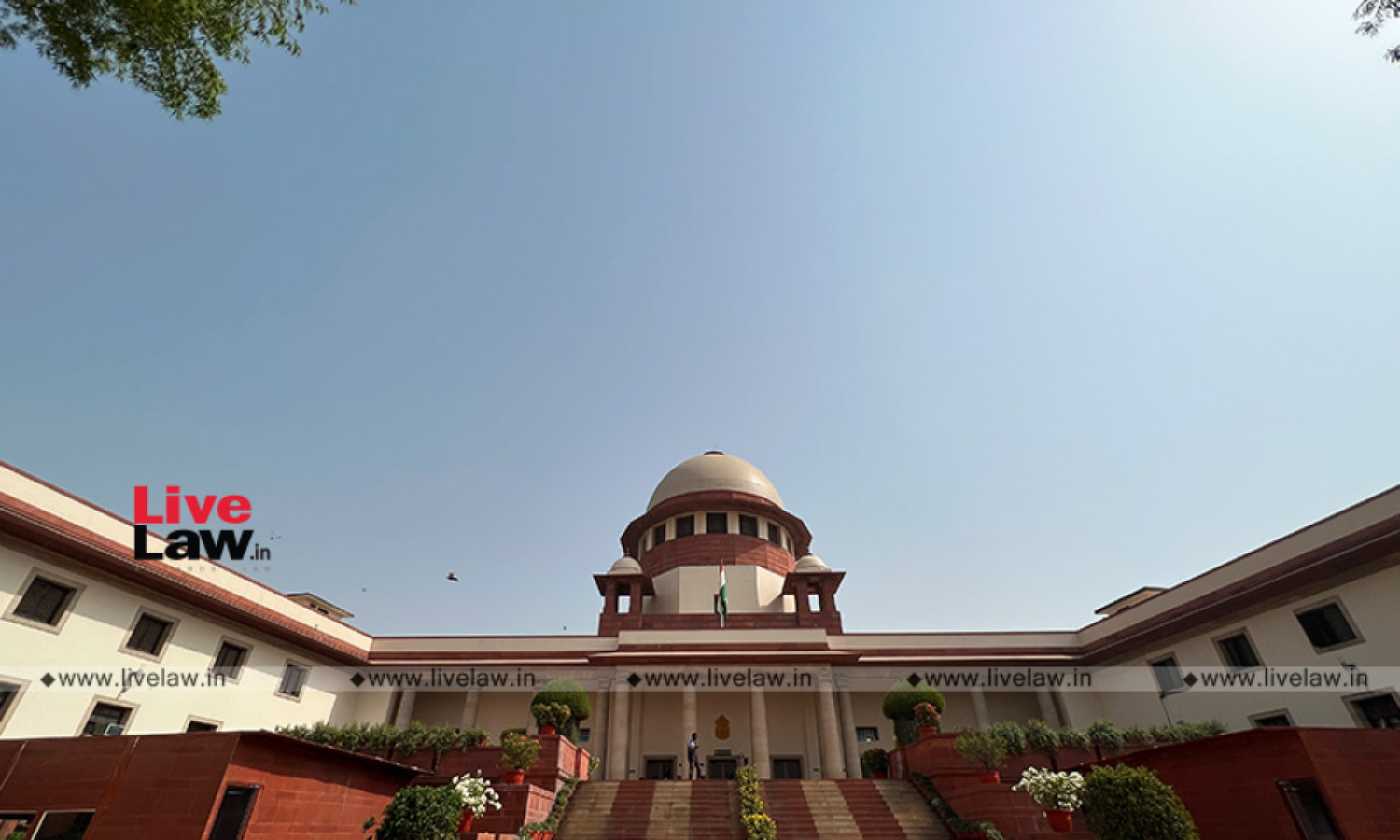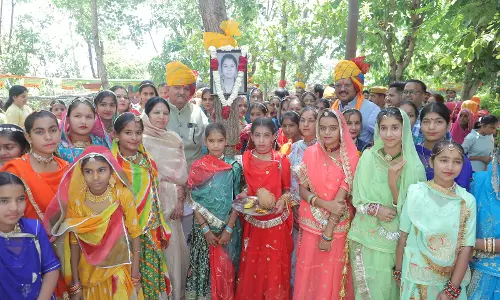Order 41 Rule 31 CPC | First Appellate Court Ought To Consider Evidence On Record, In Particular Those Relied Upon By Trial Court: Supreme Court

The Supreme Court, on Monday, held that, non-consideration of the evidence on record, in particular those relied upon by the Trial Court and not stating the points for determination, by the First Appellant Court would lead to infirmity in its judgment. The Apex Court reiterated that it is the duty of the First Appellate Court to decide the appeal keeping in view the scope and...
The Supreme Court, on Monday, held that, non-consideration of the evidence on record, in particular those relied upon by the Trial Court and not stating the points for determination, by the First Appellant Court would lead to infirmity in its judgment.
The Apex Court reiterated that it is the duty of the First Appellate Court to decide the appeal keeping in view the scope and powers conferred to it under Section 96 read with Order 41 Rule 31 of the Code of Civil Procedure, 1908 ("CPC").
A Bench comprising Justices S. Abdul Nazeer and Vikram Nath set aside an order of the Karnataka High Court and reinstated the decree passed by the Trial Court. It noted that the High Court had neither formed the points for determination nor considered the evidence on record, especially those appreciated by the Trial Court. It was of the view that the judgment of the Appellate court should reflect application of mind and record findings with reason in respect of all the issues, along with the contentions raised by the parties. It held that in the present case, the judgment of the High Court being non-compliant with the requirements of Order 41 Rule 31 was unsustainable in law. Order 41 Rule 31 reads as under -
"Contents, date and signature of Judgment"
The Judgment of the Appellate Court shall be in writing and shall state (a) the points determination; (b) the decision thereon; the reasons for the decision; and (d) where decree appealed from is reversed or varied, the relief to which the appellant is entitled, and shall at the time that it is pronounced be signed and dated by the Judge or by the Judges concurring therein."
Factual Background
In 1991, the appellant had instituted a suit in Court of City Judge, Bangalore against her brother, seeking partition of ancestral and self-acquired properties of their father, who had passed away in 1974.
The self acquired property ("concerned property"), which was initially Devadaya Inamathi Land, was claimed to have been exclusively occupied by her father. Later, upon the coming of Mysore (Religious and Charitable) Inams Abolition Act, 1955, her father had applied before the revenue authorities for occupancy rights. While the proceeding was pending before the revenue authorities, her father died and the prosecution was taken over by her brother.
The brother had countered her claim over ½ share in the concerned property, by arguing that prior to their father's death, the concerned property was being cultivated by him as well as their father and upon the death of their father, he was exclusively cultivating the concerned property.
The Trial Court had decreed the suit in favour of the appellant, inter alia, declaring her to be entitled to ¼ share in the ancestral properties and ½ share in the self-acquired property.
The brother had approached the Karnataka High Court, which modified the decree to the extent that the appellant's ½ share in the concerned property was reduced to ¼. The basis of such modification was the contention of the brother that the concerned land was cultivated by him and his father and therefore, each would be entitled to ½ share. Upon their father's death, his ½ share would be further divided equally between his children. Thus, the appellant would be entitled to only ¼ of the concerned property.
Decision of the Supreme Court
The Court was only dealing with the appeal with respect to the issue pertaining to the division of the self-acquired property of the father. On perusal of documentary evidence and upon considering the testimonies of the witnesses, the Trial Court had noted that the concerned property was cultivated continuously by the father since 1955 and because the occupancy rights are heritable in nature, the brother got his name substituted in the proceedings before the revenue authorities. Thus, it had concluded that the concerned property was solely cultivated by the father and upon his death, both his children would inherit it in equal shares.
The Apex Court was perturbed to note that without considering the evidence relied upon by the Trial Court, the High Court in a cursory and cryptic manner allowed the first appeal. It observed -
"Neither did it deal with the statements or the other documentary evidence on record and only on a bald statement of the respondent, which according to it, was mentioned in the order of the Land Tribunal that respondent was jointly cultivating the said land along with his father held that it became a joint family estate and, accordingly, reduced the share of the appellant to 1⁄4 (one fourth) from 1/2 (one half)."
The Apex Court was concerned that the High Court's judgment was not in consonance with the requirement of Order 41 Rule 31 of the CPC, which contemplates that the judgment of the Appellate Court should be in writing; include the points for determination; the decision; the reasons; and where decree is varied or reversed, the relief to which the appellant is entitled.
Citing the decision of the Kerala High Court in Kurian Chacko v. Varkey Ouseph; the decisions of the Apex Court in Santosh Hazari v. Purushottam Tiwari, H.K.N. Swami v. Irshad Basith, Vinod Kumar v. Gangadhar; and its recent judgment in Manjual And Ors. v. Shyamsundar And Ors. the Court held -
"From the above settled legal principles on the duty, scope and powers of the First Appellate Court, we are of the firm view and fully convinced that the High Court committed a serious error in neither forming the points for determination nor considering the evidence on record, in particular which had been relied upon by the Trial Court. The impugned judgment of the High Court is thus unsustainable in law and liable to be set aside."
Considering that the suit was instituted by the appellant way back in 1991 and the evidence is not disputed or demolished by the brother, instead of remanding the matter to the High Court, the Apex Court thought it fit to decide the matter on merits.
Case Name: Somakka (Dead) By Lrs. v. K.P. Basavaraj (Dead) By Lrs.
Citation: 2022 LIVELAW (SC) 550
Case No. and Date: Civil Appeal No. 1117 of 2009 | 13 June 2022
Corum: Justices S. Abdul Nazeer and Vikram Nath
Headnotes
Code of Civil Procedure, 1908; Order 41 Rule 31 - Contents, date and signature of Judgment - The Judgment of the Appellate Court shall be in writing and shall state (a) the points determination; (b) the decision thereon; the reasons for the decision; and (d) where decree appealed from is reversed or varied, the relief to which the appellant is entitled, and shall at the time that it is pronounced be signed and dated by the Judge or by the Judges concurring therein - appeal is a continuation of the original proceedings - first appeal is valuable right of the parties - whole case is open for rehearing both questions of facts and law - being first appellate court, it is the duty of the High Court to ensure that the judgment reflect conscious application of mind and it must record contentions raised by the parties and the court's findings, supported by reasons in respect of all the issues - non compliance would lead to infirmity in the judgment. [Paragraph No. 28 to 29.4]




